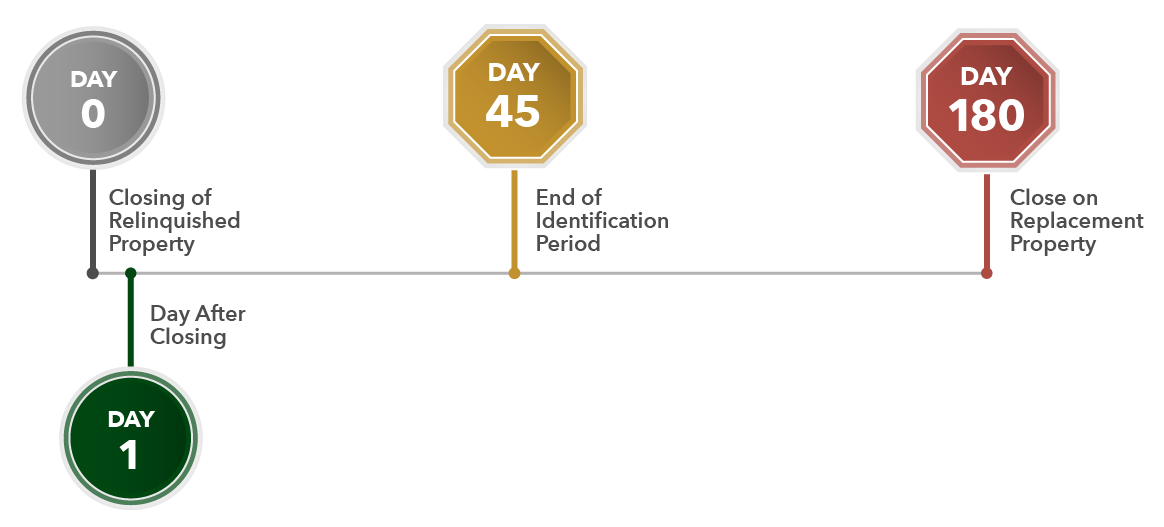
Timeframes for a 1031 Exchange
Timeframes for a 1031 Exchange
Taxpayers completing a 1031 Exchange must always be conscious of their timeframes. If a taxpayer were to miss either, they would have a tax liability.
There are two timeframes to be aware of; the 45 day identification period and the 180 day exchange period.
Taxpayers have 45 calendar days after the transfer of their relinquished property to properly identify (customarily with the Qualified Intermediary) the exact property(ies) they intend to purchase through the 1031 transaction. This 45 day rule cannot be extended, even if it were to be on a weekend day or legal holiday.

The 1031 code also requires that the taxpayer complete the acquisition of their replacement property by the earlier of:
- 180 calendar days after the transfer of the relinquished property; or
- The due date of the filing of the taxpayer’s federal income tax return for the year in which the relinquished property was transferred. For example, if the taxpayer relinquished their property on December 31st of the year, they must complete their exchange before the tax filing date (which normally would be April 15th of the following year). To be able to use all 180 days of the 1031 exchange for the acquisition of their replacement property, they must file an extension at tax filing. In situations like this, it is vital that the taxpayer consults with their tax professional.
In some circumstances, extensions to the deadlines may be available should the taxpayer or their property be located in a Federally Declared Disaster Area. Or, if the taxpayer is active military and is deployed to a combat zone, there are also extensions available.
If you think one of these extensions may apply in your situation, please contact us and also reach out to your tax professional for specific guidance.

